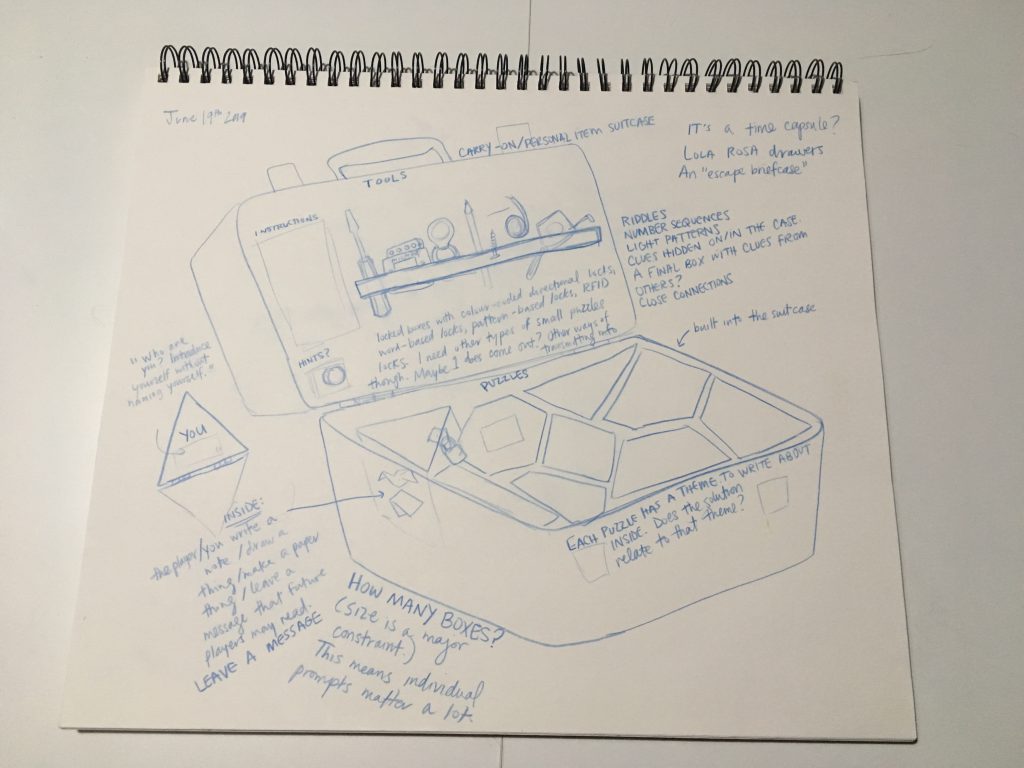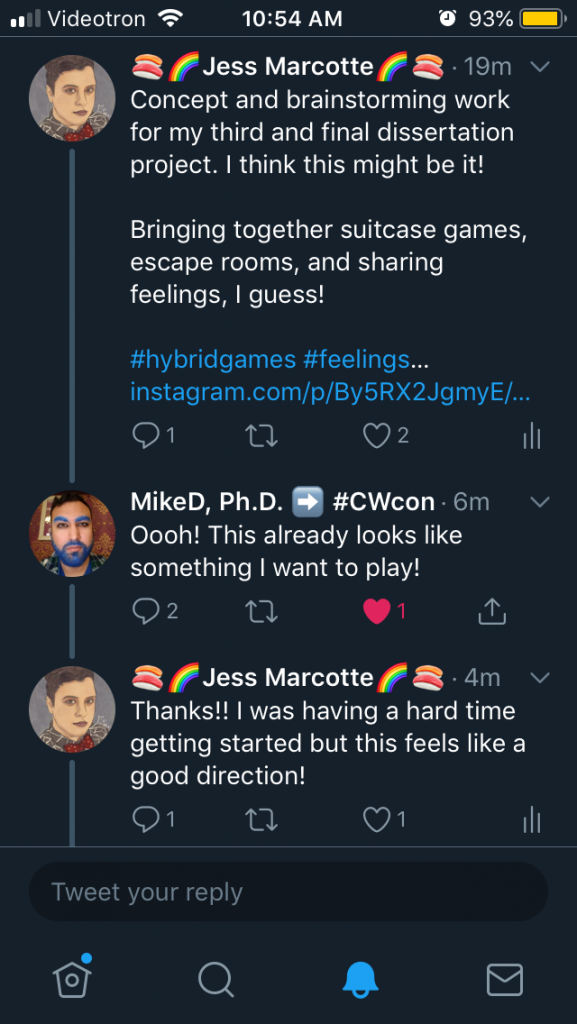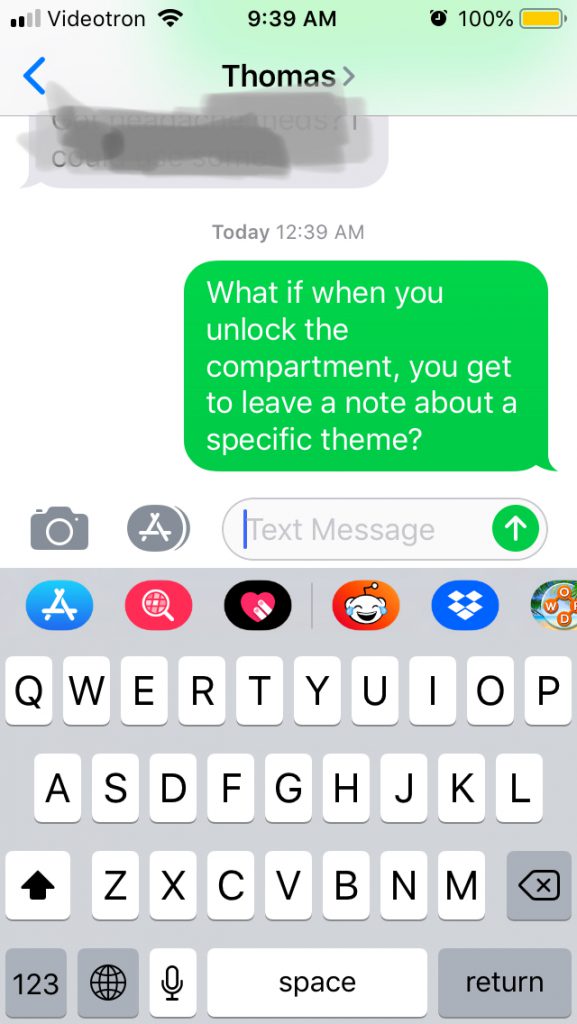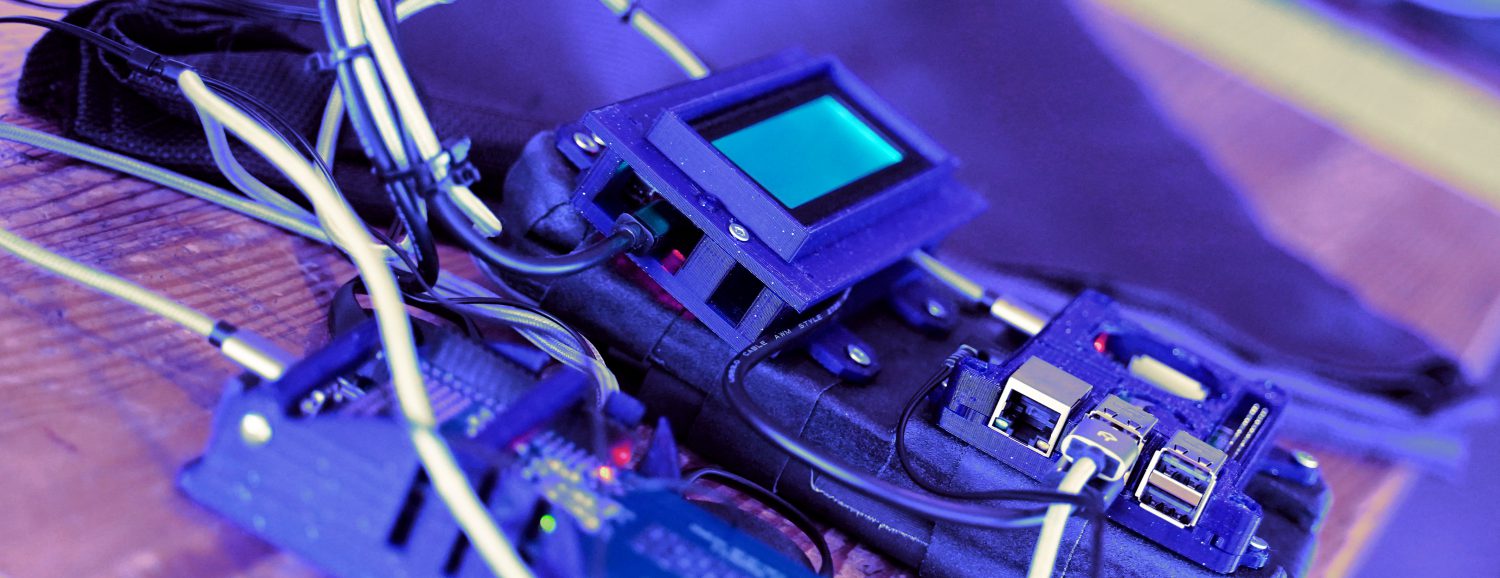Last week, I managed to break through and figure out what I want to do for my third and final dissertation project! It’s a suitcase game where you have to unlock a variety of small boxes, encounter messages from previous players, and leave messages of your own about particular themes/prompts/topics.

Now that I’ve come up with my concept for my last project, I am researching whether something like this has existed before. There are definitely “escape rooms in a box”, but these are largely cardboard boxes with items that you then take OUT of the box and use to solve the puzzle. The box itself seems to matter very little — and I think that’s an affordance that could use more exploration.
What makes this challenging as a constraint is that there isn’t going to be a lot of physical space or surface area to work with. But I think that as long as I colour-code things and clearly signpost the connection between the clues and the boxes, it’ll be fine.
So today is a day for researching. I’m immersing myself in escape room literature, looking at Escape Room boxes, guides and philosophies about designing escape rooms and types of puzzles. It’s fun! It’s exciting — and that matters a lot when you’ve been feeling burnt out. The fact that something feels right and good is nice.
Recently, a peer of mine (Scott DeJong) who saw my design sketch about the new project recommended looking into Scott Nicholson’s work with Escape Room boxes in classrooms, and I’m now noticing that his work also comes up from Escape Room designers, which is neat! Scott came to my queering game controls panel at CGSA a few years ago and his insights were really interesting.
There’s a lot of puzzle advice out there, both generally and specifically for Escape Rooms, and I am definitely already breaking the rules because I am using such a constrained space, so I will have to play up other aspects like colour-coding (for example) to clearly signpost what goes with what.
I’m about to go down some rabbit holes… See you later!


